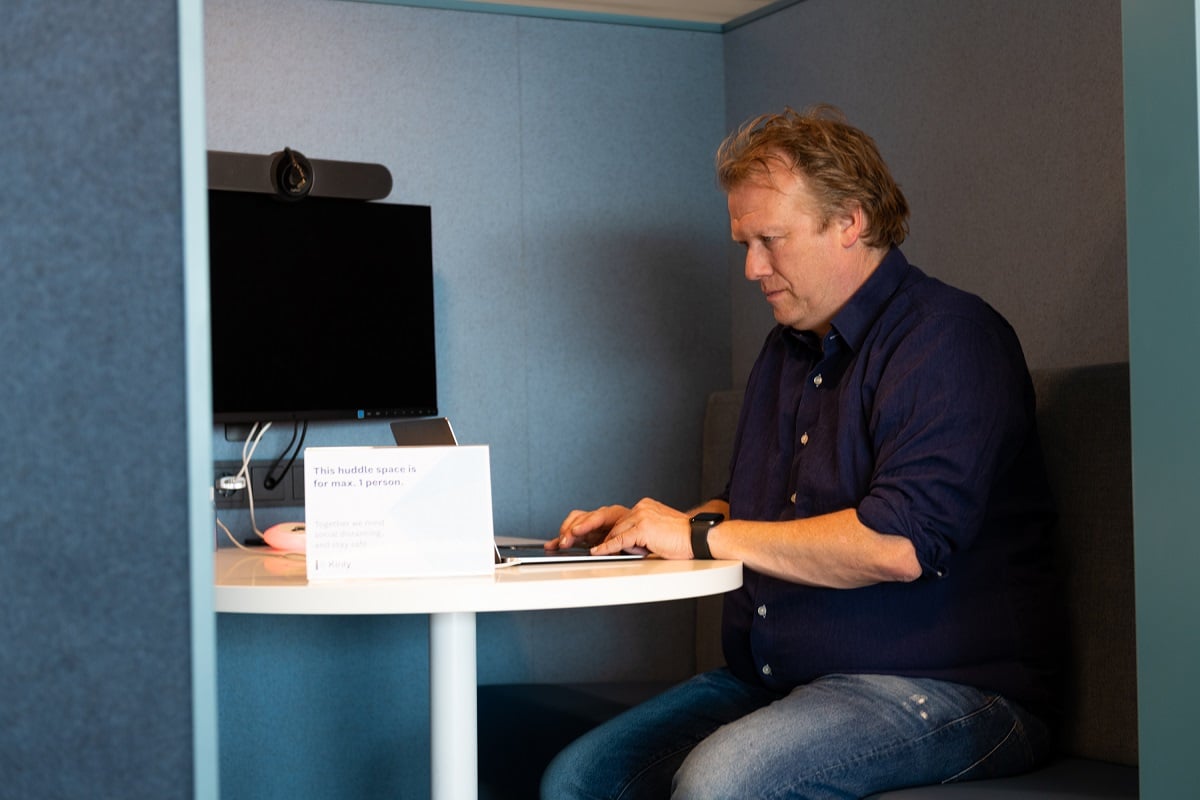Work is not a place, but an activity
The year 2020 changed the way we worked together completely.
Despite all the problems, it has also provided us the opportunity to re-evaluate the way we work. And since we’ve seen that things can be done differently, the change might be a permanent one.
The change was not as bad as we feared.
The pandemic forced us to adapt—but many are now perfectly capable of working independent of location. The need to commute has diminished. Employees will now look for the right balance. Work is becoming an activity instead of a place to go.

Working from home: from secondary to primary location
In a very short time, our home office became the primary work location. We expect that employees will search for a balance when the office re-opens. Which begs the question: do we still need the office as we know it today?
The role of the office changes
In addition, people come to the office for certain activities that simply run more efficiently when people are together in one room. Think of a creative brainstorming session where writing with markers or sticky notes is desired. Activities like these are the reason that the office will persevere.
However, the role of the office will change.
We will seek to utilize the available space better. Meeting rooms, for example, will be focused on interacting with people outside the office location; the idea that all participants in a meeting are present physically becomes the exception to the rule.
Going forward further integration between the physical and virtual workplace is necessary.
Components of work: virtual, physical and psychological
Work is not a place; it is an activity. An activity that can take place physically and virtually. More than ever, our work location will be determined by a psychological component: the employee’s needs.
Some employees embrace working from home. They feel better because they no longer need to commute, or they’re more productive because of fewer interruptions. However, other employees miss the office enormously because they thrive in an environment where people come together and engage with one another.
The point is: Organizations must look to each employee’s needs. By identifying the needs of your employees, your organization is better able to facilitate a working environment that generates maximum output from your employees.
For now, organizations should focus on creating a safe working environment where social distancing can be maintained. There must be a difference in focus for organizations on the short- and long-term progression; the physical, virtual, and psychological components of work must be balanced.
Returning to the "old" way of working is going backwards. Let's work together to make sure we seize the opportunity to transform the way we work!









